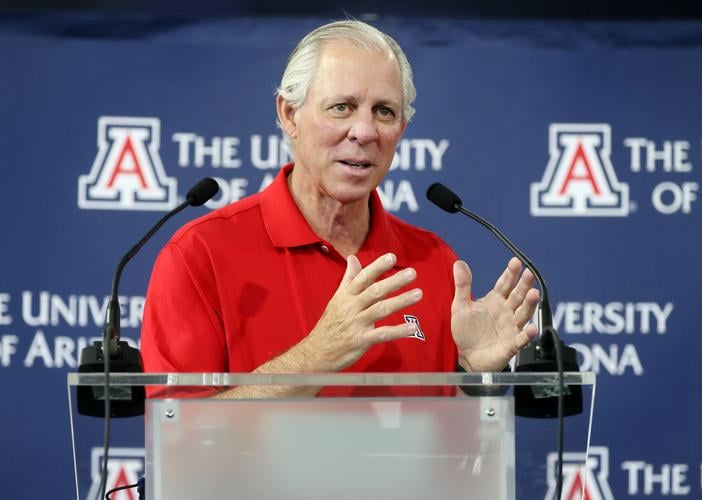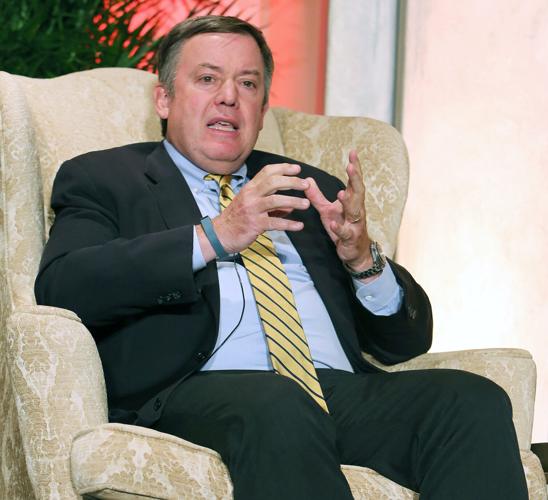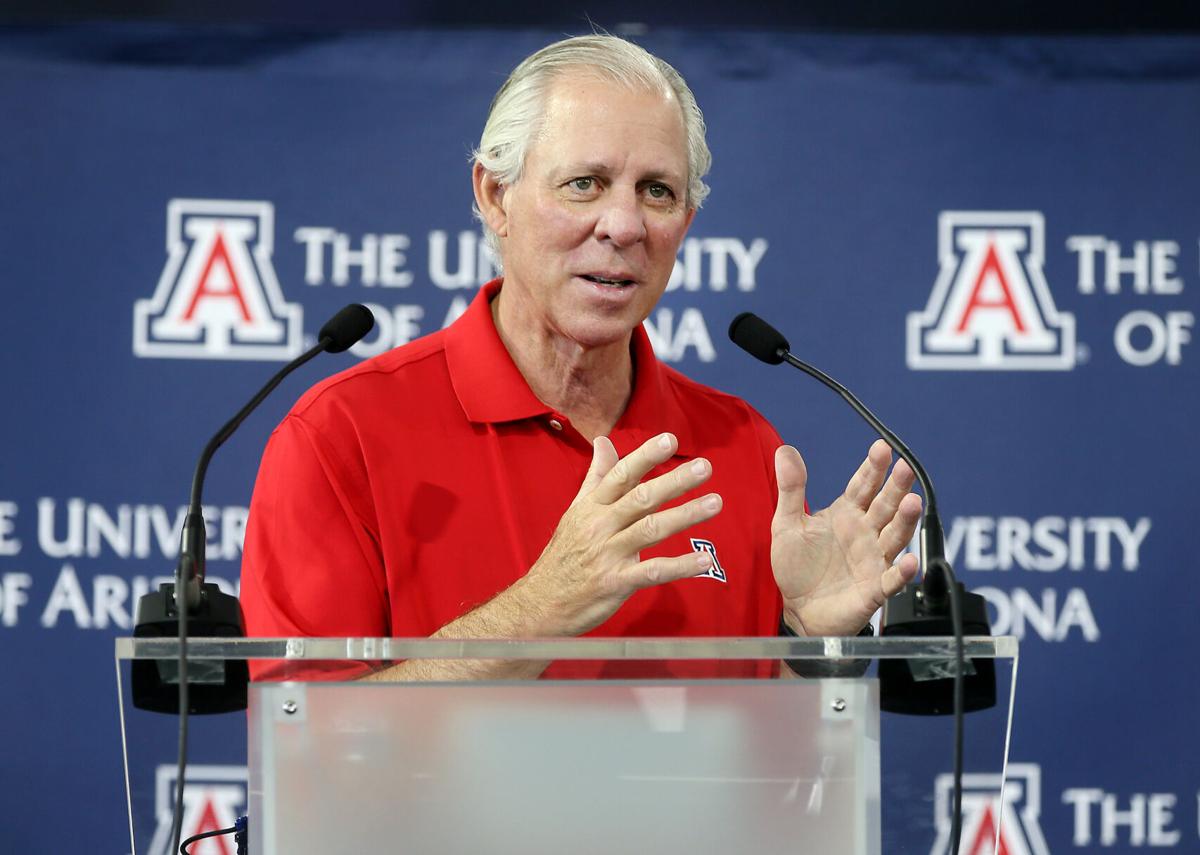The Pac-12 presidents got the conference into this mess. Can they light the path to salvation?
Years of neglect at the highest levels of power created the circumstances that led to USC and UCLA casting aside 100 years of allegiance and departing for the Big Ten.
Atop that list would be not prioritizing football, approving misguided media strategies and allowing former commissioner Larry Scott to remain in charge years after it was clear a change was needed. (We could go on, but the Hotline is feeling magnanimous today and will cut the bosses a break.)
Now, with the Pac-12 perilously close to extinction, the presidents and chancellors must decide whether to stick together as a 10- or 12-team conference, merge or partner with another league, or break apart.
Leadership is paramount, but which presidents have the boardroom clout and strategic leverage to provide it? Commissioner George Kliavkoff will present the best structural and fiscal options, but he doesn’t cast a vote. Everything hinges on the remaining eight presidents and two chancellors.
Allow our Presidential Power Index to provide some insight.
We assessed each president and chancellor on three criteria, all relative to the other nine:
Degree of influence within the boardroom
Level of passion for, and knowledge of, athletics
Amount of football strategic leverage
Here we go …
1. Oregon’s Michael Schill
Appointment began: 2015
Boardroom clout: medium
Passion level: medium
Football leverage: high
Comment: Schill just finished a two-year term as the chair of the Pac-12 board, was heavily involved in all major decisions and is under intense pressure (hello, Phil Knight) to secure the best possible landing spot for the Ducks. If Schill is committed to keeping the conference together, the odds of survival improve dramatically.
2. Arizona’s Robert C. Robbins
Appointment began: 2017
Boardroom clout: high
Passion level: high
Football leverage: medium
Comment: Robbins leads all presidents in passion level and has a better grasp of the landscape than most of his peers. What’s more, Arizona’s leverage is greater than the value of its football program would suggest, particularly if the Wildcats and ASU are, in fact, a two-for-one package … in the Pac-12 or elsewhere.
3. Washington’s Ana Mari Cauce
Appointment began: 2015
Boardroom clout: medium
Passion level: low
Football leverage: high
Comment: Cauce’s clout would be on the low end except for one crucial fact: She’s the current chair of the Pac-12 Board, having taken over for Schill on July 1. And as with Oregon and Schill, the value of UW’s football brand creates outsized leverage for Cauce in charting the course ahead.
4. ASU’s Michael Crow
Appointment began: 2002
Boardroom clout: medium
Passion level: medium
Football leverage: medium
Comment: Crow should be damaged goods in the boardroom given his steadfast support for Larry Scott and comically misguided faith in the very policies that landed the conference in this position. But don’t presume the other presidents view him that way. Crow isn’t shy about making his opinions known, for better or worse.

ASU president Michael Crow hasn't been shy about voicing his opinions in his two decades in Tempe.
5. Utah’s Taylor Randall
Appointment began: 2021
Boardroom clout: low
Passion level: high
Football leverage: high
Comment: Randall would rank even higher but for his new-kid-on-the-block status. The Utes hold considerable sway, in our opinion: The Four Corners schools work best for the Big 12 as a group, and Utah is arguably the most desirable member of the quartet. If Randall is committed to the Pac-12, the Arizona schools and Colorado could lose negotiating leverage.
6. Washington State’s Kirk Schulz
Appointment began: 2016
Boardroom clout: high
Passion level: high
Football leverage: low
Comment: Schulz is well respected for his interest and knowledge: He’s on the Pac-12 executive committee and is the conference’s representative on the College Football Playoff Board of Managers. He’s also a former Big 12 president (at Kansas State) and knows that landscape. But WSU is a secondary player, not a prime mover. (Note: Schulz now oversees the WSU system. Elizabeth Chilton, who runs the Pullman campus, has participated in board meetings, as well.)
7. Stanford’s Marc Tessier-Lavigne
Appointment began: 2016
Boardroom clout: medium
Passion level: low
Football leverage: medium
Comment: Tessier-Lavigne’s presence on the Pac-12 executive committee gives him a morsel of influence with fellow presidents, as does Stanford’s academic brand. Otherwise, he’s a role player in all this. Stanford’s leverage comes primarily from the massive Bay Area media market, not the football program itself.
8. Colorado’s Phil DiStefano
Appointment began: 2009
Boardroom clout: low
Passion level: high
Football leverage: low
Comment: Colorado’s on-field struggles place it last in leverage among the Big 12’s potential targets, but we wonder if DiStefano eventually might play an influential role with his peers. After all, Colorado spent eons in the Big 12 (and Big 8), and he was in charge during the transition to the Pac-12.
9. Cal’s Carol Christ
Appointment began: 2017
Boardroom clout: low
Passion level: medium
Football leverage: low
Comment: Christ cares more about football than she’s given credit for (publicly), but the immutable laws of victory and defeat have, over time, rendered the Bears a bit player in the current realignment game. The athletic department’s poor financial situation adds to Cal’s desperation, undercutting any leverage.
10. Oregon State’s Jayathi Murthy
Appointment begins: Sept. 2022
Boardroom clout: zero
Passion level: unknown
Football leverage: low
Comment: The Beavers are in a brutal spot with the combination of a low-profile football program and a president whose tenure hasn’t started. With Murthy not yet in office, the school’s representative at the Pac-12 board level is interim president Rebecca Johnson, who has been on the job since May ’21.






